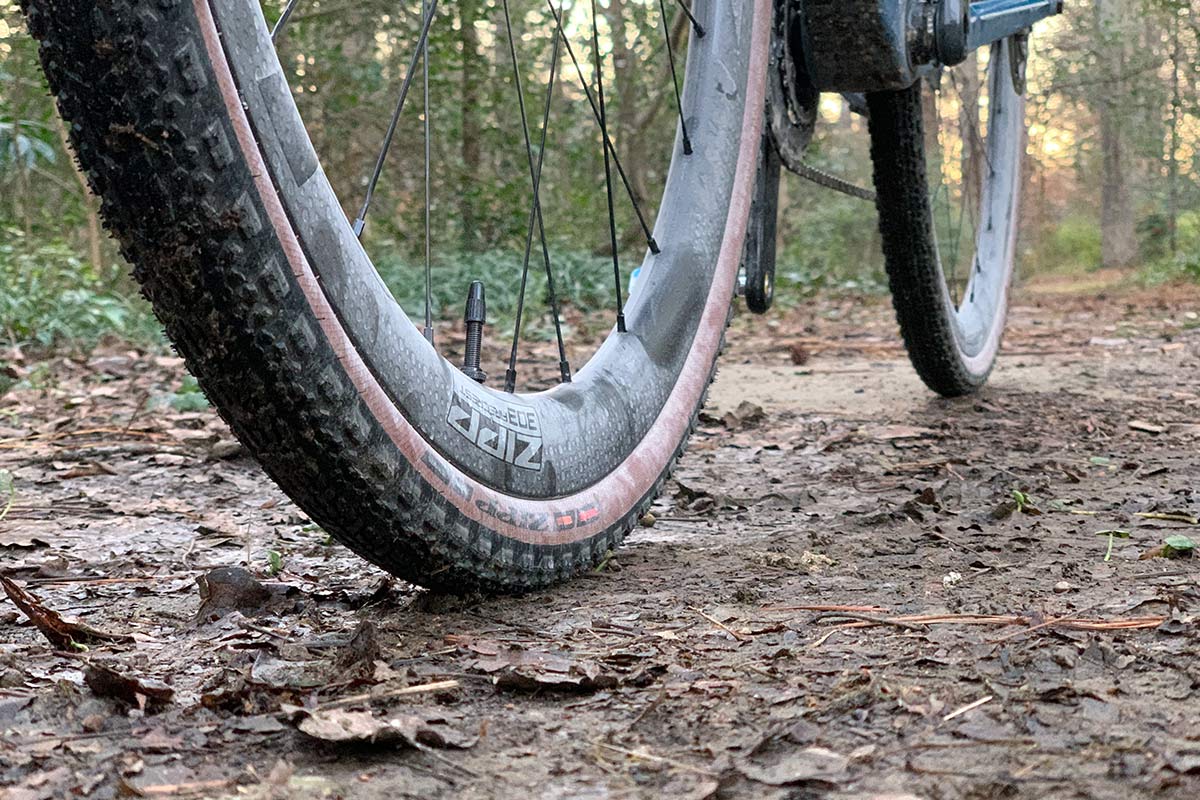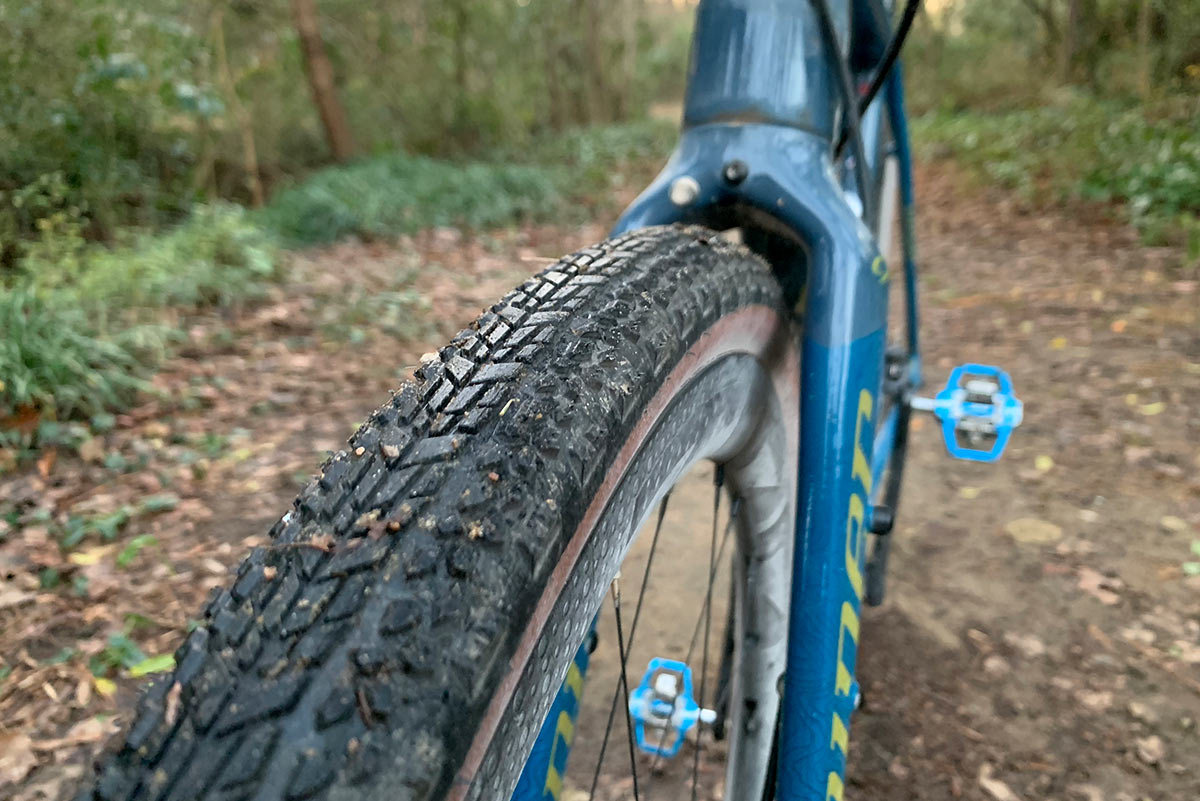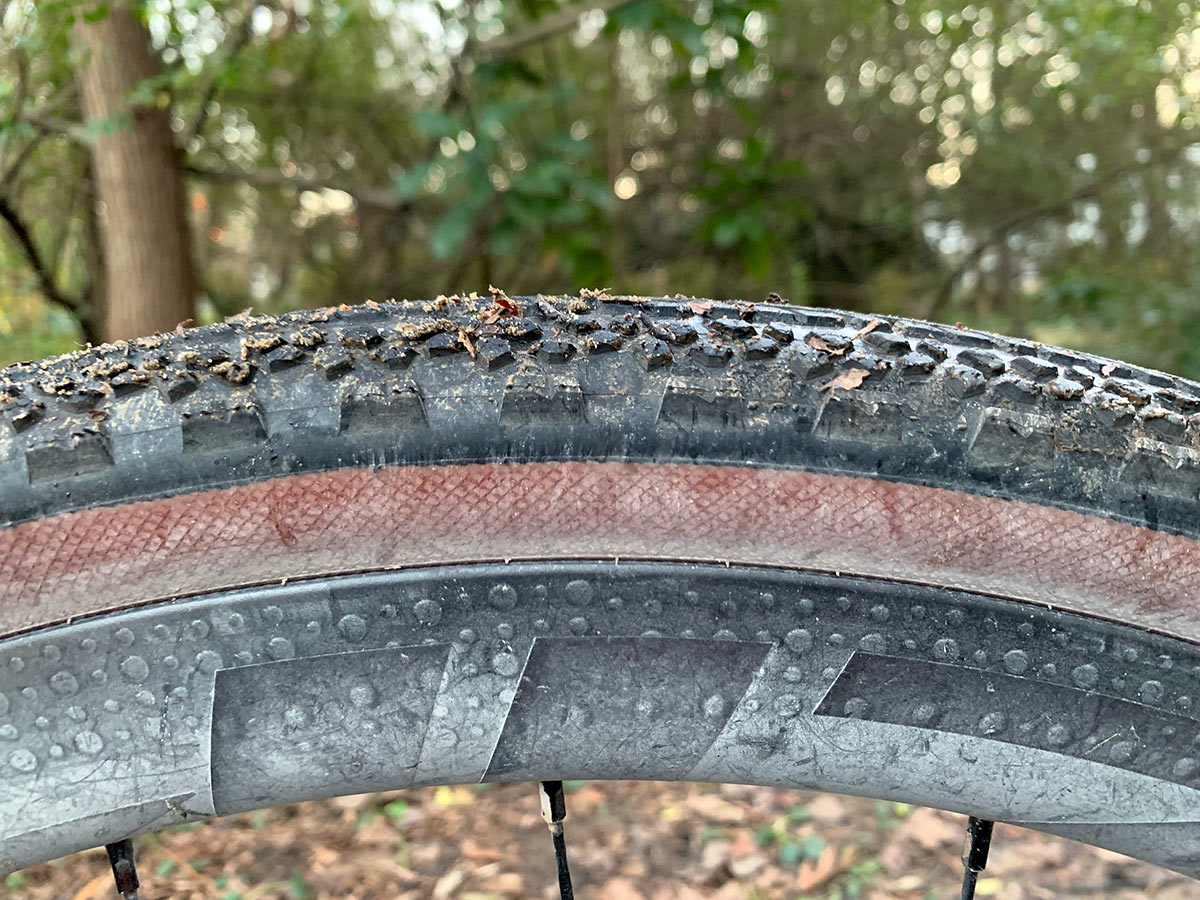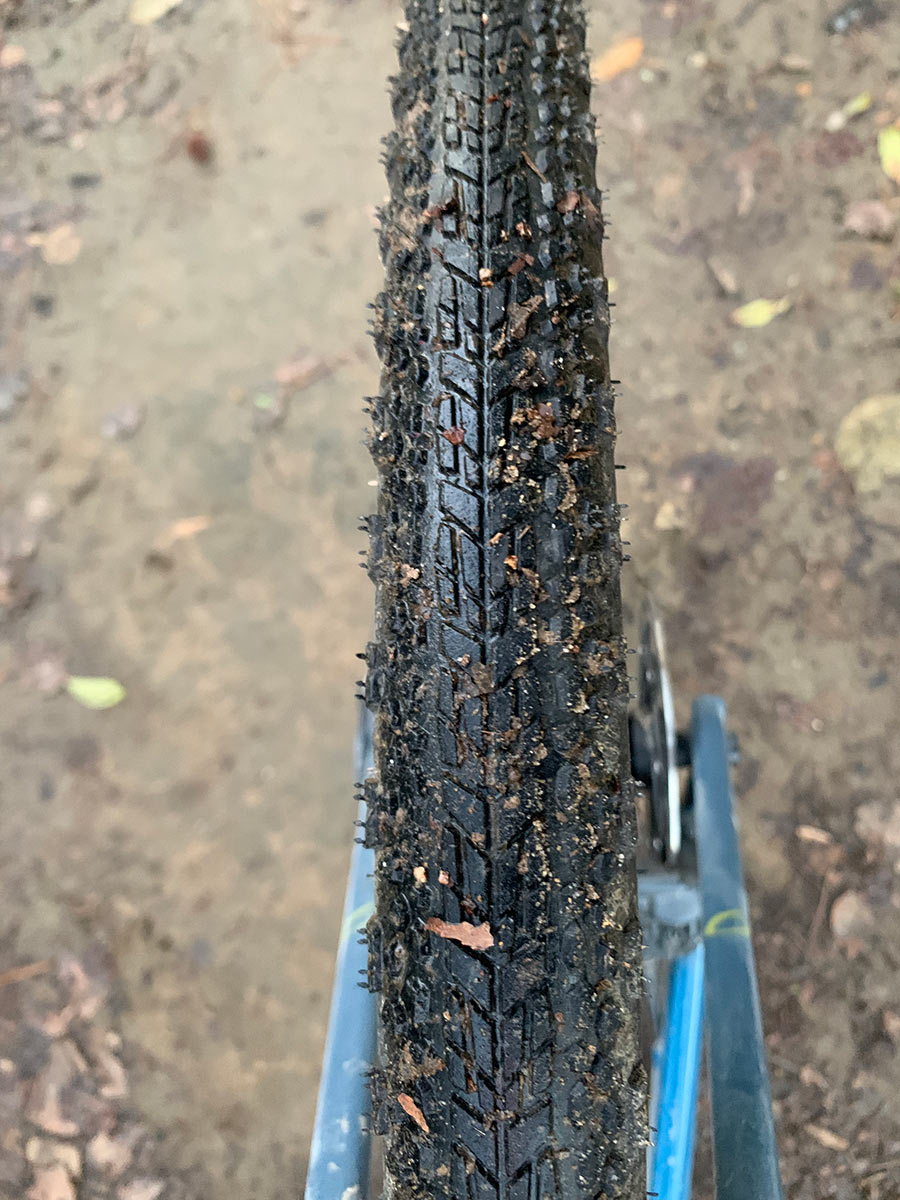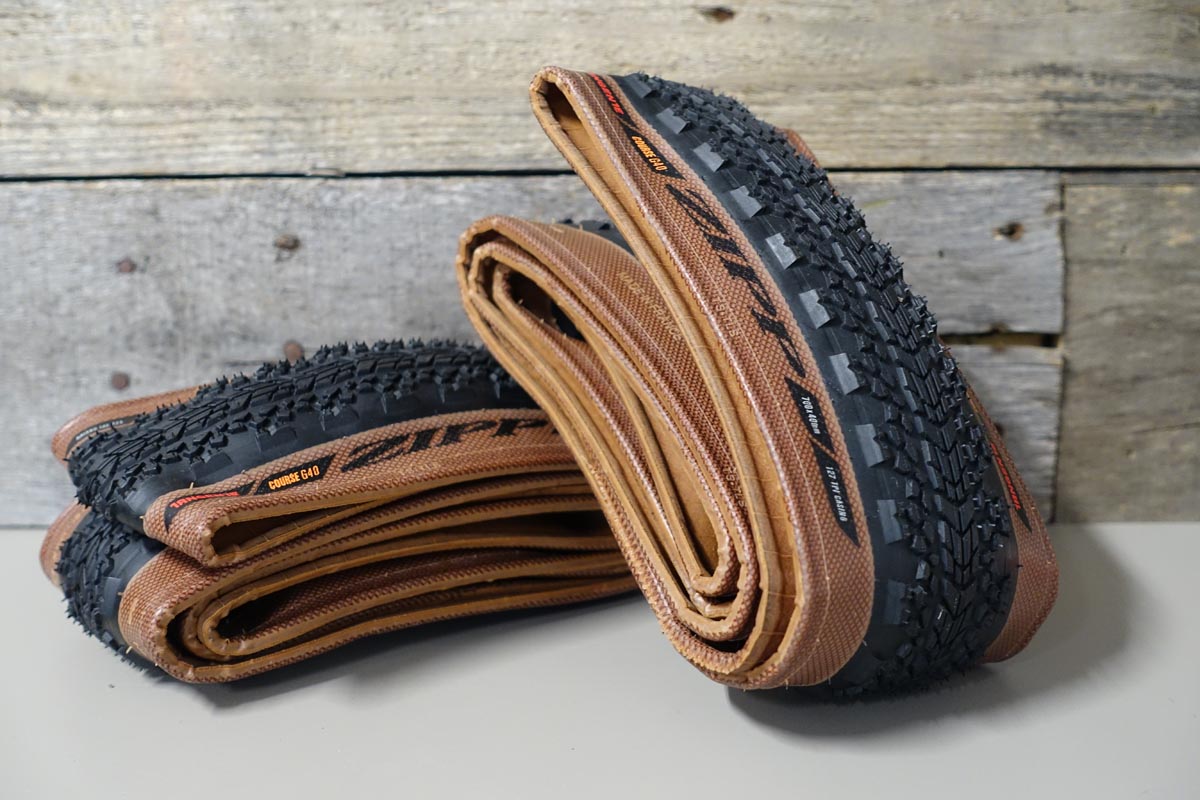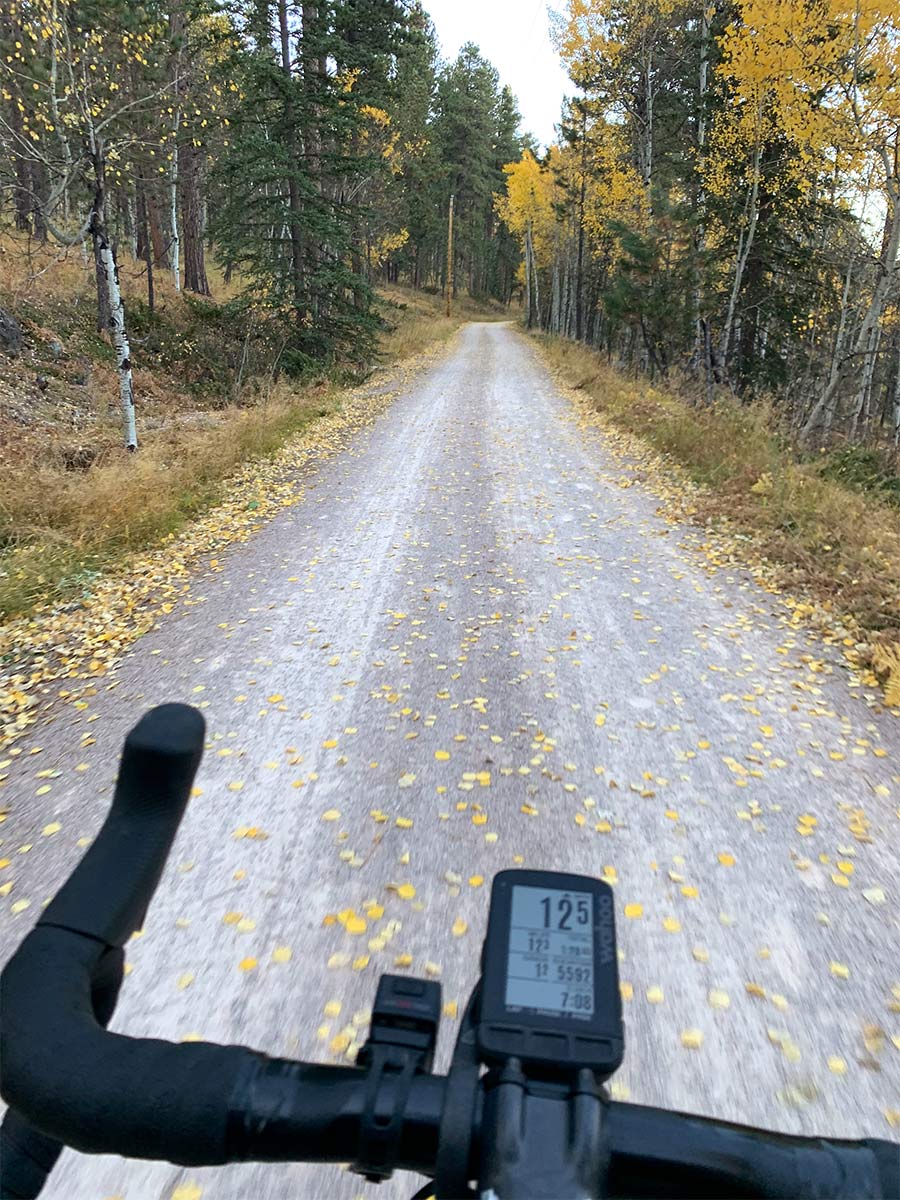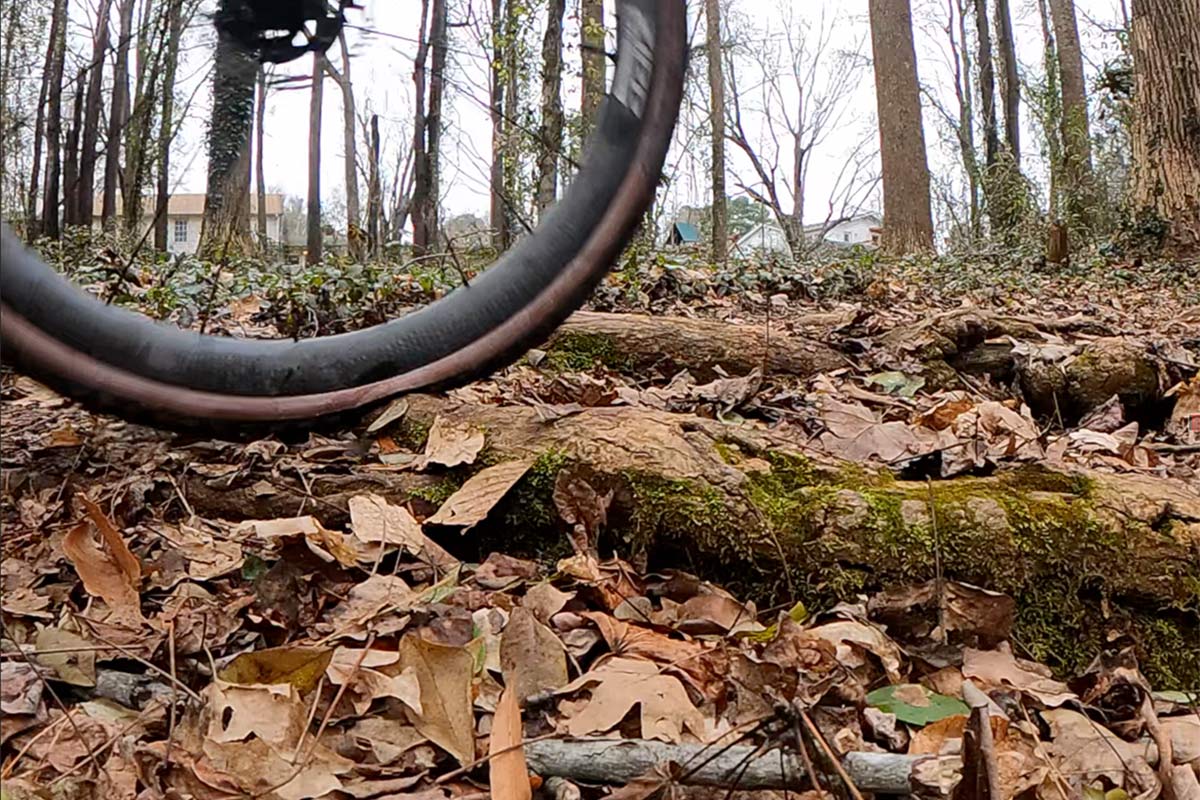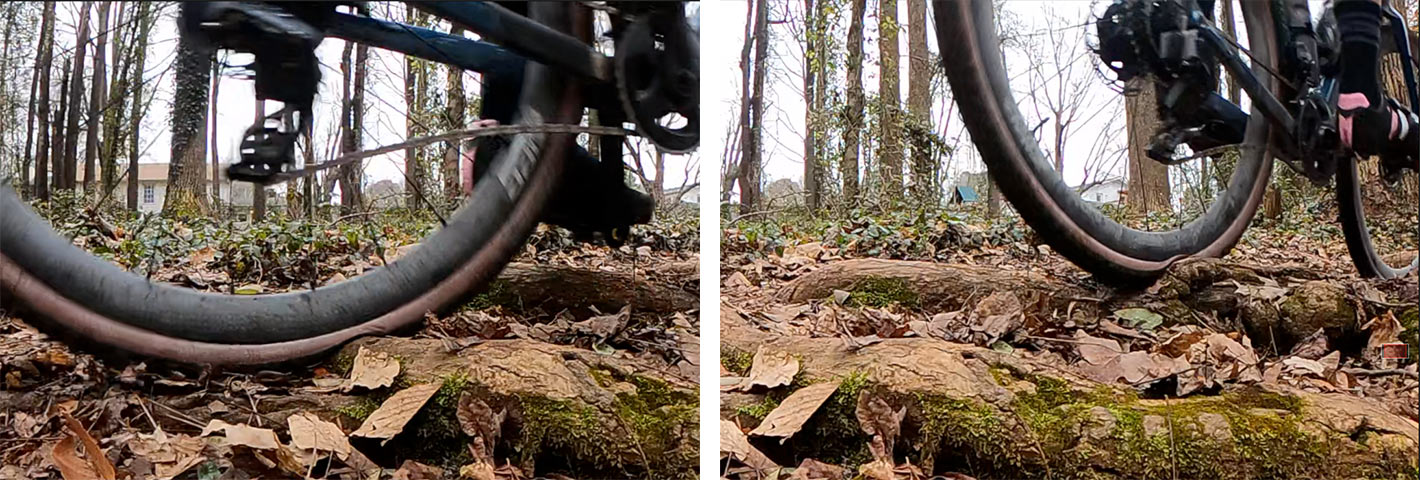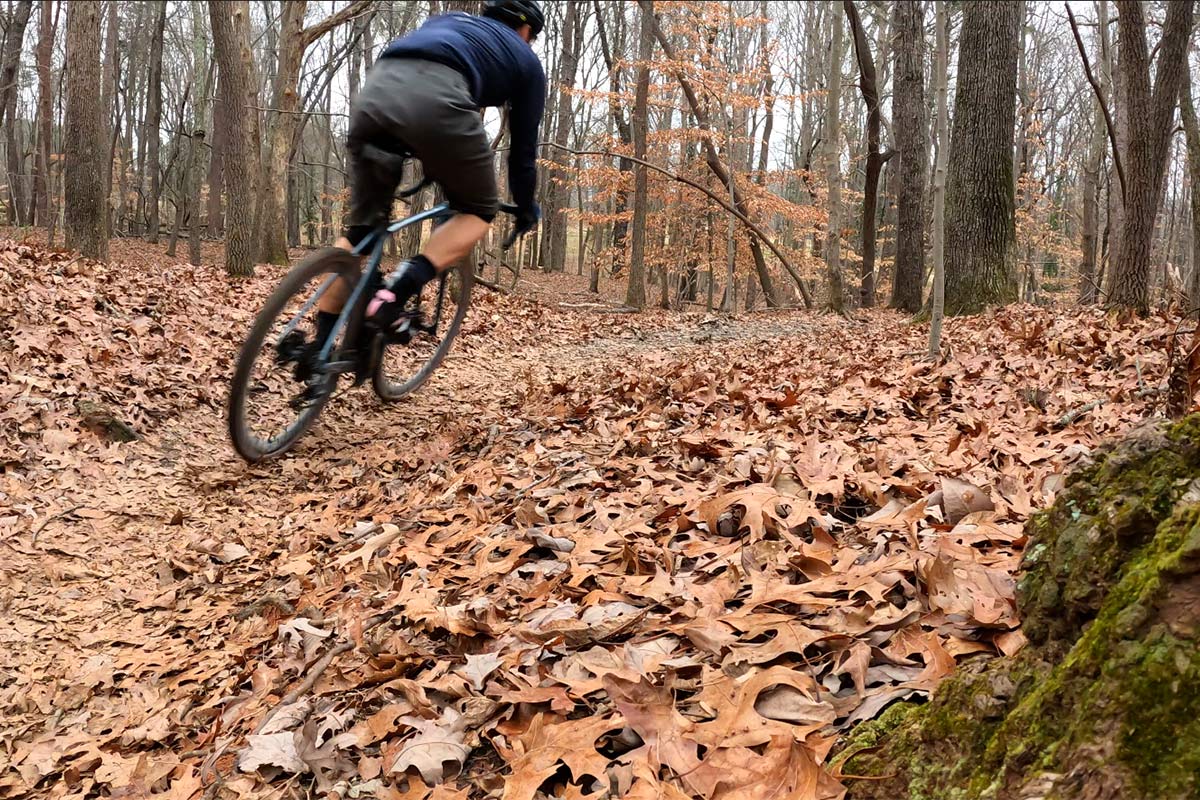It’s almost odd that Zipp has but one single gravel tire option. No, they’re not a tire maker, but with all the effort they’ve put into rolling resistance science and tire pressure, you’d think they’d have a wider selection of rubber for their wheels.
But, the one they do have is good. Like, really good. It rolls fast on a wide variety of surfaces, handles low pressures very well, takes some abuse, and grips in the corners even when it’s a bit wetter than I’d like.
With just one size, 700×40, it’s aimed more at the performance rider than those trying to make a drop-bar play bike. So, if you’re looking for speed and grip in a tire designed for modernly wide road and gravel rims, check this out…
ZIPP Tangente Course G40 tire specs
Zipp claims a 465g weight for the tires, but these measured in at 487g and 475g. Not bad for the category, putting it on par with similar tires using a dense center tread block section.
On Zipp’s current 2020 Zipp 303 Firecrest wheels, they measured right at 40mm. You can see the scale and caliper photos and more tread detail shots in our launch coverage, before they got all dirty!
The Zipp gravel tires only come in this tan wall version, which is more of a brown, and matched well with the Niner RLT. Your aesthetic results may vary.
Sometimes, “exposed” sidewalls can wear more quickly, but after ~150 miles, they’re showing virtually no wear. I’ll discuss surfaces tested further down, but some have definitely been rockier and rootier.
The secret to these tires’ all around solid performance on gravel, dirt, trail, and pavement, seems to be the transition from a nearly continuous tread section in the center to larger side knobs with more spacing on the edges. Between them are mixed shape and size knobs that provided excellent cornering grip at all speeds on all surfaces.
Well, maybe not straight up mud surfaces, but as you can see from the pics, I rode them in wet conditions and they performed as well as one could expect. If you know your limits and the terrain, these will comfortably take you to your edge and hold predictably. I could tell when they were about to break loose, so no surprises for pushing too hard, either.
But why only a 40mm wide size?
In September 2020, Zipp moved their tire line into full control of their product development team. Before that, much of their tire development was done with 3rd party manufacturing partners. That’s not to say that tires before that were just an afterthought, Zipp did want a really good set of tires their dealers could sell alongside their wheels. But their focus was definitely on the rims and wheels.
Now, though, they tell us they’ve tasked their Zipp Product Manager with exploring more sizes and technologies and “create the fastest combination (of wheels and tires) for our customers”. Read into that marketing statement what you will; we think it means they’ll be adding more options in the near future.
Zipp gravel tire ride review
One of my favorite rides on the tires is shown above, the George S. Mickelson Trail in South Dakota. It’s primarily crushed limestone and gravel, and is the quintessential “gravel road”. Smooth, fast, and run, with plenty of climbing and descending over its 109 miles.
Here, as expected, the tires were perfect. Hard not to be, really, and the fast rolling center section paid off.
It’s when we get to rougher conditions that a tire’s personality shines through, and we’ve got plenty of that here in Greensboro. Our typical “gravel” ride is full of rooty trails, and I managed to find a few washboard sections after some rain, too.
Zipp’s gravel tires use a bead-to-bead Aramid casing to prevent punctures. Often, these additional layers can stiffen the sidewalls such that they reduce compliance and that buttery smooth feel we love from a supple tire. The 127tpi casing makes up for this a bit, as do lower tire pressures…
Zipp recommends a range of 30-65psi, but I mostly stayed below that. One most rides, I kept it around 28-29psi. Then I dropped it to 26psi rear, 25psi front and it felt good…probably the best long term balance between comfort and performance without hitting the rims.
Then I dropped it to 20.5psi in the front and 21.5psi in the rear (using the Blackburn Honest Digital Gauge). And that’s what you’re seeing in the three pics above. Nailing larger roots at that pressure definitely smacks the rim a bit…a bit more frequently than I’d like, but even the 15+ miles on the road looping home from that trail were perfectly fine at that pressure. It didn’t feel squirmy, just grippy but still rolled smoothly.
So….Zipp’s PM says low 20’s is probably pushing it, and I’ll probably bring it back up to mid-20s. The recommendations are probably a bit too high, perhaps a legacy from “road” tires thinking, but experiment. It’s worth pointing out that are hookless-compatible, and I tested them on hookless rims. You can hear Zipp’s thoughts on Hookless here.
Lastly, I took them for a spin on proper singletrack Even with tons of leaf cover, they ripped through the trails with nary a slip. And on when they pierced the leaves and hit actual hardpack dirt? Super grip!
With many tires starting at a 42mm width and going up from there, these are narrow by “popular” standards. But they held up, and if I were toeing the line at a long distance gravel race, I’d probably err on the side of weight and aerodynamics over maximum bouyancy. I never felt like these tires’ 40mm width was a drawback, particularly for the intended use.
If you’re looking for a great performance gravel tire that holds its own on a wide range of surfaces, the Zipp Tangente Course 40 is worth a look. Retail is $65, available at Competitive Cyclist, direct, and through your local shop.
Disclosure: Some of these links are affiliate links that may earn a small commission for Bikerumor if you click on them and buy something. This helps support our work here without costing you anything extra. You can learn more about how we make money here. Thanks!
